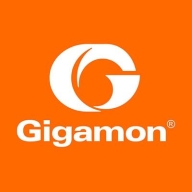

Gigamon Deep Observability Pipeline and Microsoft Defender Vulnerability Management compete in the network security and observability domains. Users appear more satisfied with Microsoft's comprehensive features, making it a stronger contender.
Features: Gigamon Deep Observability Pipeline offers valuable features like network traffic visibility, real-time analytics, and data decryption capabilities. Microsoft Defender Vulnerability Management provides robust threat detection, vulnerability assessment, and reporting features.
Room for Improvement: Gigamon could improve ease of setup, integration capabilities, and resource efficiency. Microsoft Defender could enhance its user interface, data export options, and provide more detailed documentation for better user experience.
Ease of Deployment and Customer Service: Gigamon offers robust deployment that integrates well with infrastructures but requires more initial setup time. Microsoft Defender benefits from seamless integration with Microsoft services, offering straightforward implementation and extensive customer support.
Pricing and ROI: Gigamon is positioned as a premium product with significant ROI for deep insights but high initial setup costs. Microsoft Defender is competitively priced, offering significant value through its security suite and lower setup costs.
As a Microsoft partner, we receive significant discounts, making the solution affordable for us.
They are sometimes responsive, however, often issues cannot be reproduced on their end, making it challenging.
My team raised multiple support tickets for the product, and we were able to get responses from Microsoft support team.
Their response time and skill set are both good.
It is scalable; I evaluated the product and decided to use Defender on over 700 of our company servers.
There are compatibility issues occasionally arising with false positives when other security tools are not whitelisted in Microsoft Defender.
It is very resource-intensive, consuming a lot of memory and CPU.
I would rate the overall stability as an eight.
A vulnerability I patch within 15 minutes takes 24 additional hours for an update.
The product is not stable; it often uses excessive memory and CPU, which makes it slow.
A potential improvement could be the introduction of a more advanced AI agent, possibly a large language model with better performance than the existing Microsoft Copilot.
For non-partners, however, the cost could be seen as higher, between seven to ten.
Overall, every organization wishes for cheaper options, but we look at the security side as well, so we are good for now.
The pricing is reasonable, and it's included in the whole Microsoft E5 bundle, so it's all-inclusive.
The most valuable aspect is the kind of assessment results I get, and the recommendations provided in Microsoft products really help in taking care of the resources.
Microsoft Defender Vulnerability Management provides regular advisories and recommendations that help improve our security posture.
A valuable feature is the ease of management and integration with Microsoft products.


Gigamon Deep Observability Pipeline is a comprehensive network visibility solution that provides real-time insights into network traffic. It offers SSL inspection and mobile network monitoring for traffic monitoring purposes. The solution optimizes networks, aids in security inspection, and improves firewall performance. It is praised for its performance, power, straightforward integration, stability, and ease of initial setup.
With Gigamon, organizations can gain complete visibility into their network traffic, identify potential threats, and take proactive measures to prevent them. The solution is ideal for organizations of all sizes, including enterprises, service providers, and government agencies.
Microsoft Defender Vulnerability Management enables organizations to identify vulnerabilities, manage patches, and fortify threat detection. It offers endpoint assessments, cloud incident management, and dynamic security through Microsoft's Security Scorecard integration.
Organizations leverage Microsoft Defender Vulnerability Management for advanced threat detection and response. It provides robust tools for vulnerability assessment and cloud incident management, integrated with Microsoft's Security Scorecard to enhance dynamic security profiling. Key features include automatic patch deployment, security configuration management, and seamless integration with Microsoft platforms, benefiting both on-prem and cloud environments. Organizations can track vulnerabilities with severity-based reports, helping manage outdated software and minimizing threat exposure.
What are the key features of Microsoft Defender Vulnerability Management?In healthcare, Microsoft Defender Vulnerability Management helps manage compliance with health regulations, while in finance, it aids in securing sensitive data from cyber threats. Manufacturing sectors benefit from its patch management, keeping operational technology systems less vulnerable to disruptions.
We monitor all Advanced Threat Protection (ATP) reviews to prevent fraudulent reviews and keep review quality high. We do not post reviews by company employees or direct competitors. We validate each review for authenticity via cross-reference with LinkedIn, and personal follow-up with the reviewer when necessary.